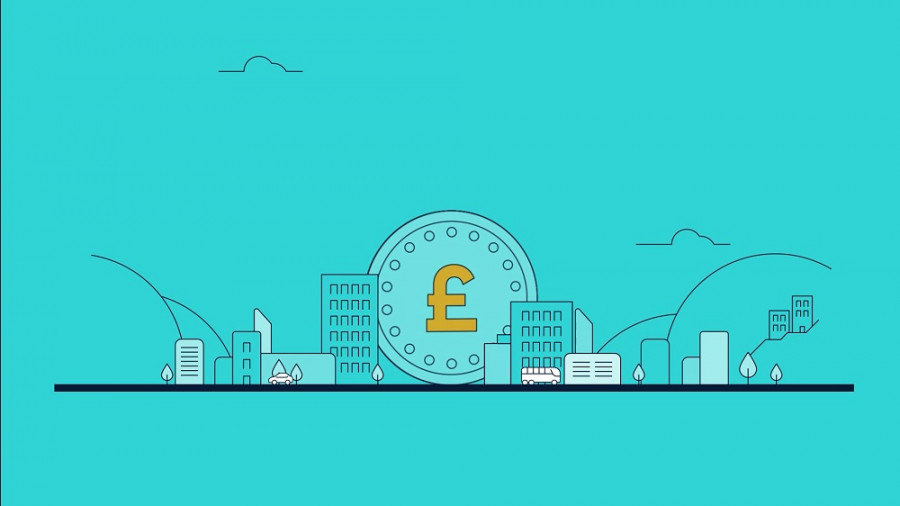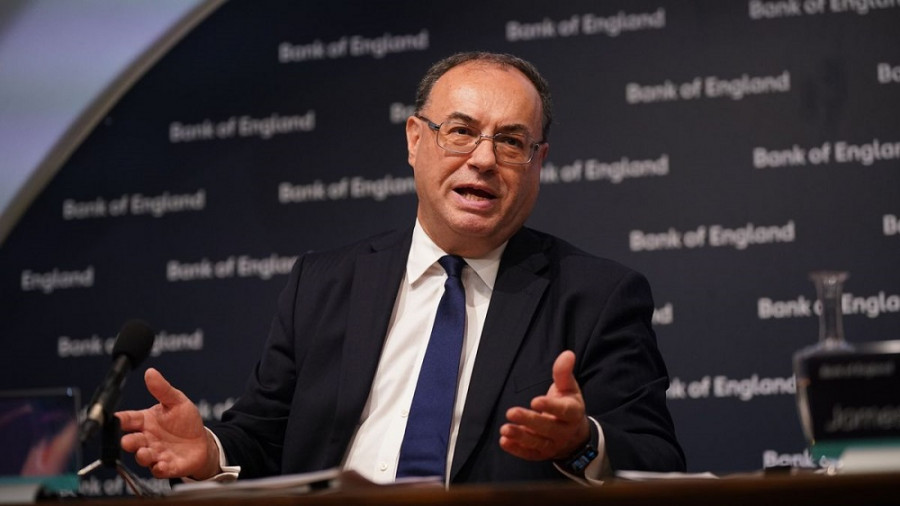
On Thursday, February 9, parliamentary hearings on the Bank of England's monetary policy report will take place. Within the framework of these hearings, BoE Governor Andrew Bailey and several members of the Monetary Policy Committee will speak. This is an important event for the British currency, so we will likely witness increased volatility in the GBP/USD pair. If Bailey's rhetoric is not in favor of the pound, the pair might again test the 1.2000 support level, which corresponds to the bottom line of the Bollinger Bands indicator on the D1 timeframe.
Downward prospects
Recall that the results of the February meeting of the Bank of England were not in favor of the pound sterling: firstly, the regulator lowered its inflation forecast for the first quarter of this year to 9.7% (previously expected to rise to 10.1%), and secondly, it changed the wording of the accompanying statement, retracting, among other things, its previous instruction that the central bank would need to act "strongly." The text of the February statement said that further tightening of monetary policy would be necessary in the event of a sustained increase in price pressures.

At the final press conference, reporters could not get an answer from Bailey on whether the rate reached its peak. The head of the Bank of England urged to be guided by the rhetoric of the accompanying statement but also made it clear that further decisions on the rate will be taken from meeting to meeting. There is no pre-agreed trajectory of the hike. Bailey also voiced another phrase that traders interpreted against the British currency. He noted that the change in wording in the statement reflects a turnaround, but it is too early to talk about it in a categorical manner.
Given such unambiguous signals, it is not surprising that GBP/USD traders ignored the formal outcome of the February meeting (the regulator increased the rate by 50 points to 4.0%). The market focused on further prospects for tightening the monetary policy, assessing the messages from the central bank in terms of "practical application." Thus, before the February meeting, most experts were confident that the central bank would raise the rate to 4.5% before announcing the end of the current cycle. Now analysts are increasingly voicing the 4.25% target in the context of a possible finale. There is also a more "dovish" version, according to which the regulator will stop at the level reached in February.
In addition, it is worth noting that the Bank of England, unlike the Federal Reserve, did not refute rumors that the central bank may resort to a rate cut at the end of 2023. Bailey only noted that if the economy develops in accordance with the central forecast, "the regulator will have to reassess."
In other words, despite the fact that the BoE held its meeting less than a week ago, questions have accumulated for Bailey. And tomorrow's event will likely be more informative, because the head of the central bank will answer questions not from the press but from members of the House of Commons Treasury Committee.

If Bailey elaborates on the previously voiced messages, confirming the "guesses" of traders that the central bank may complete the cycle at around 4.25%, the pound will be under additional and very significant pressure.
GBP/USD Outlook
After the February meeting results were announced, the pound plummeted almost 200 points against the dollar. Next, the U.S. nonfarm payrolls were published, which only added pressure on the GBP/USD. Overall, the pair lost almost 400 pips in less than a week. The downward momentum faded only near the 1.2000 support level. And if on Thursday Bailey is not on the side of the British currency, bears of GBP/USD will again have a reason for the attack: in that case, the psychologically important price barrier 1.2000 will not resist.
The current upward pullback of the price is due to the general weakening of the dollar. In my opinion, the decline in the greenback is temporary since the latest data in the U.S. labor market, as well as (and especially) the latest statements by Jerome Powell, indicate that the Fed will raise the rate not only in March, but also at the next two meetings. For example, the probability of a 25-point rate hike in May is now estimated at 70% (via the CME FedWatch Tool), and the probability of a June hike is 34%.
Conclusions
Following tomorrow's speech in parliament, Bank of England Governor Andrew Bailey may put additional pressure on the British currency, given his previous rhetoric at the February meeting of the central bank. In this case, even weak dollar positions will not help GBP/USD buyers: the pair will at least return to the 1.2000 support level (the lower line of the Bollinger Bands indicator on the daily chart) with a likely breakdown to the next price barrier at 1.1950 (the lower line of the Bollinger Bands indicator on the four-hour chart).